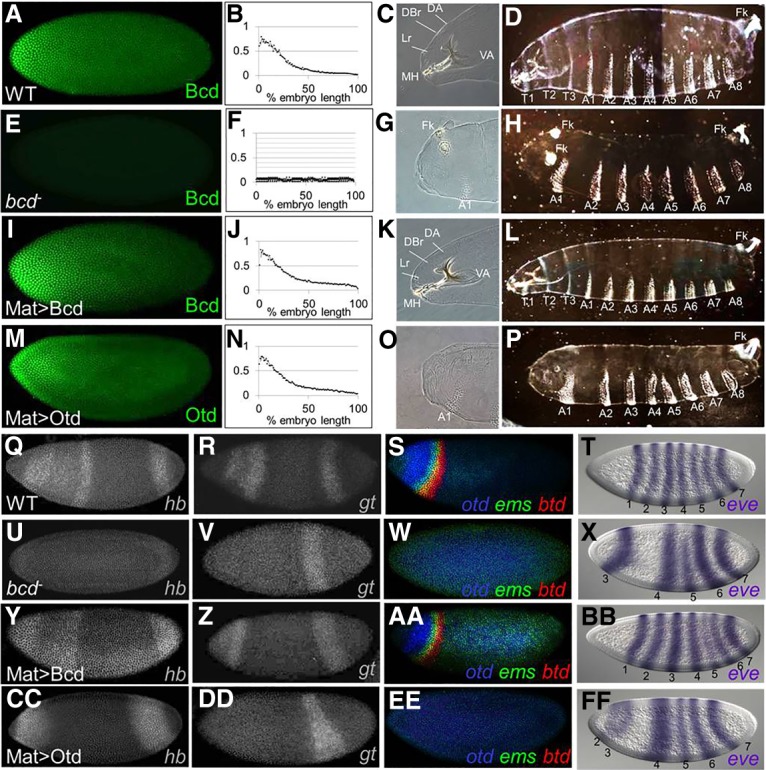Figure 1.

A maternal Otd gradient (Mat > Otd) cannot replace most Bcd-like functions. (A–P) Protein expression patterns (A,E,I,M), gradient quantifications (averaged from five embryos; B,F,J,N), anterior cuticle structures (C,G,K,O), and whole larva cuticles (D,H,L,P) are shown for wild type (A–D), bcd mutants (E–H), bcd mutants containing the Mat > Bcd transgene (I–L), and bcd mutants containing the Mat > Otd transgene (M–P). Labeled structures in anterior regions (C,G,K,O) include the dorsal arm (DA), dorsal bridge (DBr), labrum (Lr), mouthhooks (MH), ventral arm (VA), Filzkoerper (Fk), and first abdominal segment (A1). (D,H,L,P) Thoracic (T1–T3) and abdominal (A1–A8) segments are labeled. (Q–FF) mRNA expression patterns for six Bcd target genes (hunchback [hb], giant [gt], otd, empty spiracles [ems], btd, and even-skipped [eve]) in wild type (Q–T), bcd mutants (U–X), bcd mutants containing the Mat > Bcd transgene (Y–BB), and bcd mutants containing the Mat > Otd transgene (CC–FF). Assayed target genes are labeled in the bottom right corner of each panel. (T,X,BB,FF) Numbers correspond to eve stripes. All embryos in this study are oriented with anterior to the left.
